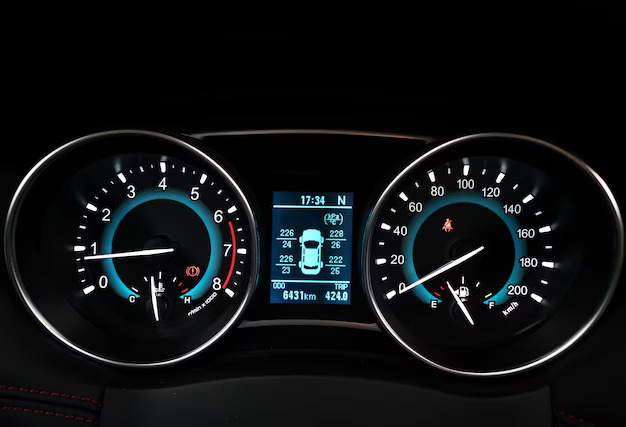The turbocharger system is a vital component in modern engines, providing increased power and efficiency. It utilizes a turbine-driven forced induction system to compress the incoming air, resulting in improved engine performance. However, like any complex system, the turbocharger can encounter issues over time. When a problem arises, the vehicle’s onboard diagnostics system may trigger a warning light on the dashboard. In this article, we will discuss the common causes behind turbocharger system warning lights and provide troubleshooting tips to help you address these issues effectively.
Causes of Turbocharger System Warning Lights:
- Boost Pressure Problems: The turbocharger relies on a precise balance of boost pressure to operate optimally. If there are issues with the boost pressure, such as leaks in the intake system or a malfunctioning wastegate, it can trigger the warning light.
- Turbocharger Failure: Over time, the turbocharger itself can experience wear and tear or internal damage. If the turbocharger fails or malfunctions, it can lead to a loss of boost pressure and activate the warning light.
- Sensor Malfunctions: The turbocharger system utilizes various sensors to monitor its performance, such as the boost pressure sensor and the turbocharger speed sensor. If these sensors fail or provide incorrect readings, it can trigger the warning light.
- Blocked or Dirty Air Filters: Clogged or dirty air filters can restrict airflow to the turbocharger, affecting its performance. This can lead to reduced boost pressure and trigger the warning light.
Troubleshooting Turbocharger System Warning Lights:
- Check for Boost Pressure Leaks: Inspect the intake system, including hoses, intercooler connections, and clamps, for any signs of leaks or loose fittings. Boost pressure leaks can be a common cause of turbocharger system warning lights. Repair or replace any damaged components as necessary.
- Inspect the Air Filters: Ensure the air filters are clean and free from debris or excessive dirt buildup. Clogged air filters can restrict airflow to the turbocharger and impact its performance. Clean or replace the filters if necessary.
- Verify Turbocharger Function: If the warning light persists, it’s crucial to have the turbocharger itself inspected. A professional mechanic or technician can assess the turbocharger for any signs of damage or failure. They may perform tests to check the boost pressure, inspect the wastegate operation, and evaluate the overall condition of the turbocharger.
- Test Sensors: Faulty sensors can cause incorrect readings and trigger the warning light. Using diagnostic tools, a qualified technician can test the boost pressure sensor, turbocharger speed sensor, and other relevant sensors to ensure they are functioning correctly. Faulty sensors may need to be replaced.
- Reset the System: In some cases, the warning light may be triggered by a temporary issue. Try resetting the system by disconnecting the battery for a few minutes and then reconnecting it. This can clear any minor glitches and reset the warning light. However, if the underlying problem persists, further investigation is necessary.
- Seek Professional Assistance: If troubleshooting steps don’t resolve the issue, it is recommended to seek professional help. Turbocharger systems can be complex, and accurate diagnosis requires specialized knowledge and equipment. A skilled mechanic or technician with experience in turbocharger systems can identify the specific cause of the warning light and carry out the necessary repairs or replacements.
Preventive Measures for Turbocharger System Maintenance:
Regular maintenance can help prevent turbocharger system issues and the associated warning lights. Here are some preventive measures to consider:
- Follow Manufacturer’s Service Schedule: Adhere to the recommended service intervals for the turbocharger system. This includes regular inspections, cleaning or replacing air filters, and maintaining proper lubrication.
- Use High-Quality Oil: Use the manufacturer-recommended high-quality oil, and ensure regular oil changes are performed at the recommended intervals. Proper lubrication is essential for the turbocharger’s longevity and performance.
- Warm-Up and Cool-Down Periods: Allow the engine to warm up before putting a heavy load on the turbocharger, and let it cool down after extended driving. This helps prevent excessive stress on the turbocharger and allows the oil to circulate adequately.
- Avoid Sudden Acceleration and Heavy Loads: Aggressive driving, sudden acceleration, and heavy loads can put additional strain on the turbocharger. Try to drive smoothly and avoid unnecessary stress on the system.
Turbocharger system warning lights indicate potential issues with the turbocharger or related components. By following the troubleshooting tips outlined in this article and adhering to regular maintenance practices, you can effectively address these issues and prevent further damage. If the warning light persists or you’re unsure about the troubleshooting process, it is advisable to seek the expertise of a qualified mechanic or technician to ensure accurate diagnosis and resolution of the turbocharger system problem.











